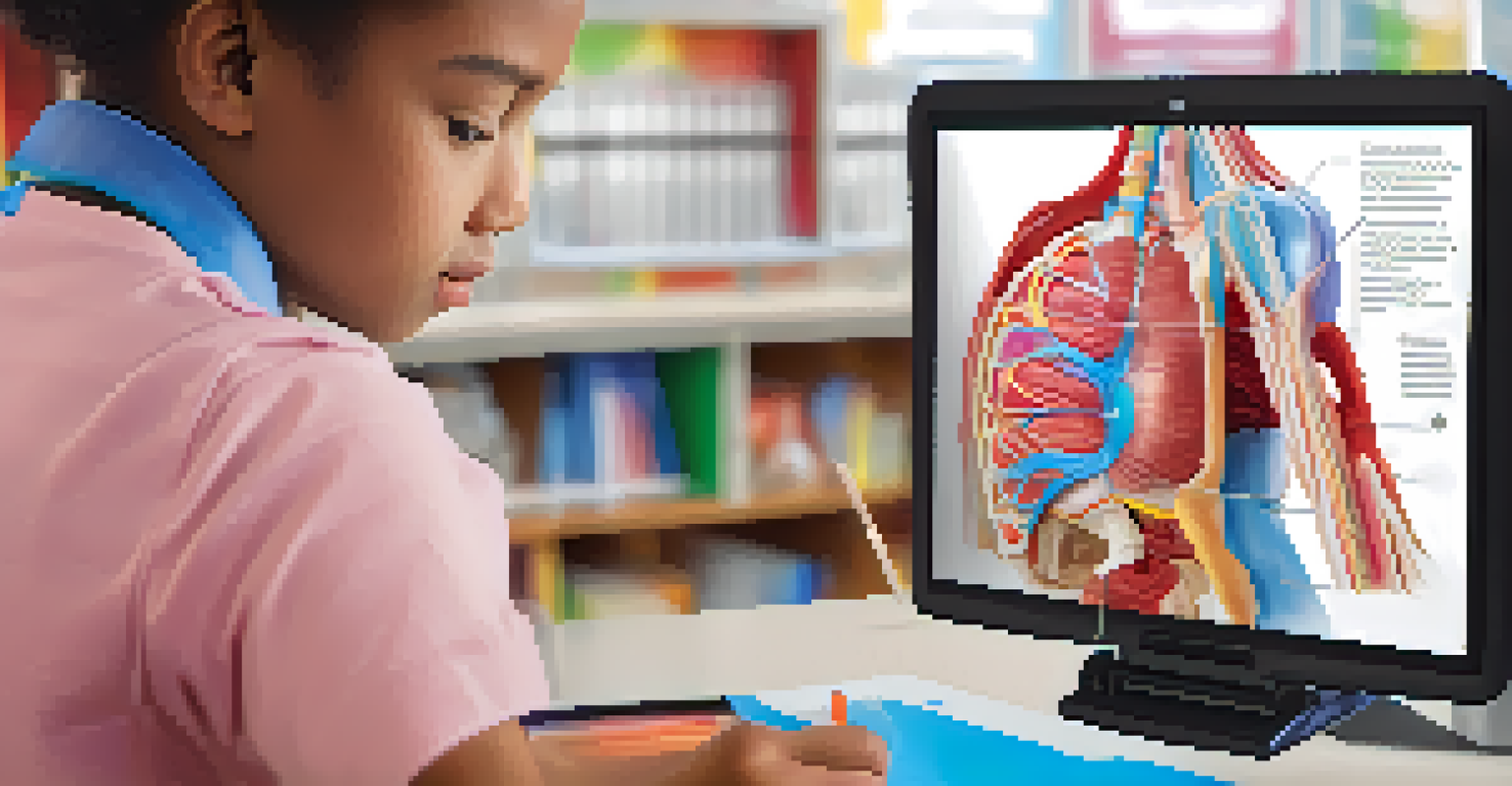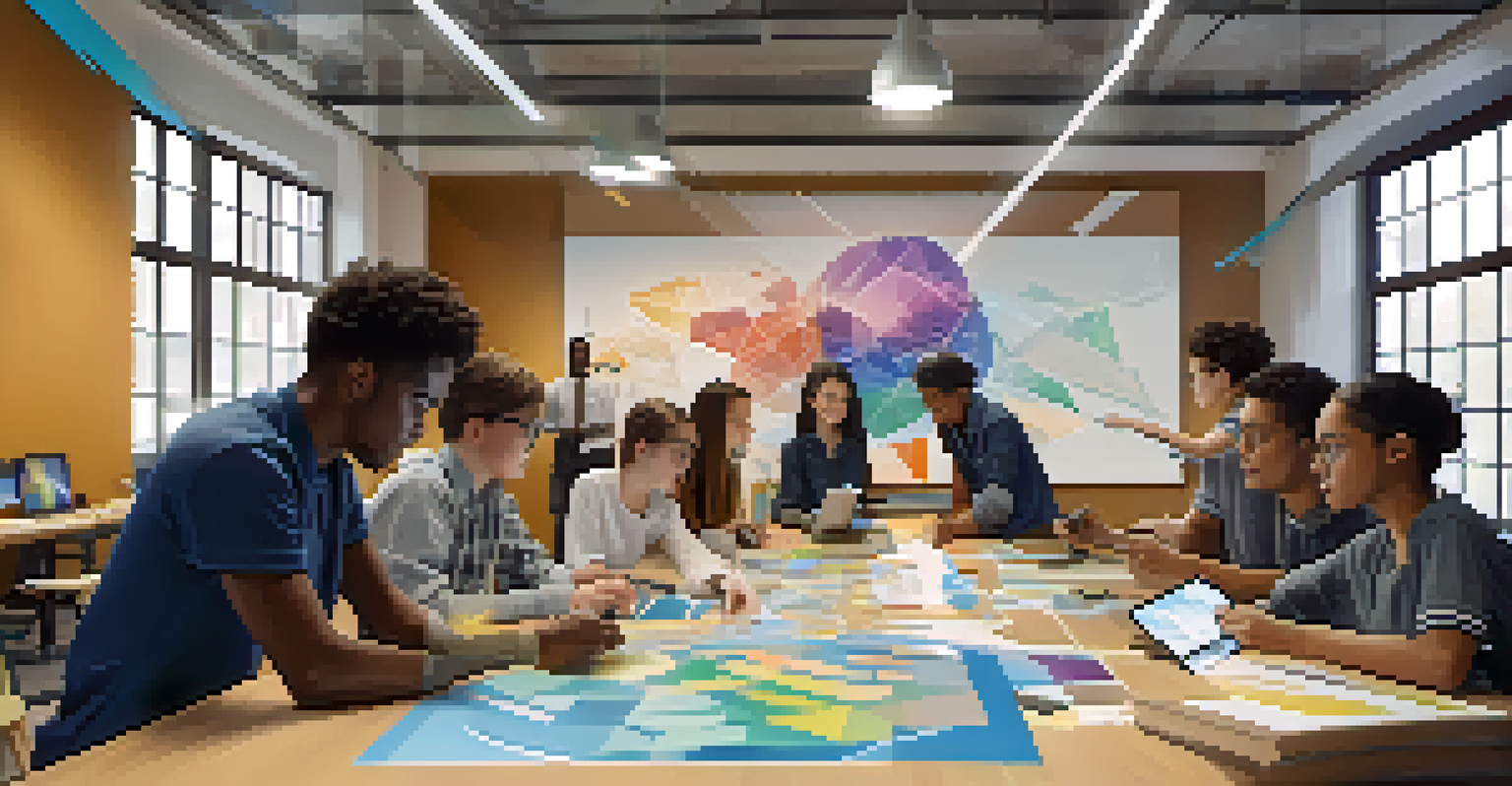AR Technology for Enhancing Visual Learning in Education

Understanding AR Technology and Its Applications
Augmented Reality (AR) is a technology that overlays digital information onto the real world, enhancing our perception of our environment. Imagine looking through your smartphone and seeing an interactive 3D model of the solar system hovering over your desk. This blend of physical and digital elements makes learning more engaging and interactive, particularly in educational settings.
Technology is best when it brings people together.
In education, AR can take many forms, from simple apps that enhance textbook images to sophisticated systems that create immersive learning environments. For instance, students can visualize complex biological processes by watching them unfold in 3D right before their eyes. This interactive approach helps to reinforce understanding in ways that traditional methods often cannot.
The potential of AR extends beyond just visual aids; it can also cater to different learning styles. Kinesthetic learners, for example, can engage with AR content through hands-on activities, promoting deeper understanding. By incorporating AR into the classroom, educators can create a more inclusive and effective learning experience.
Benefits of AR for Visual Learning in Education
One of the most significant benefits of AR in education is its ability to make abstract concepts tangible. Students often struggle with subjects like geometry or physics, where visualization is key. With AR, they can manipulate 3D objects, see them from various angles, and understand their properties in a way that a flat image simply cannot provide.

Moreover, AR fosters engagement and motivation among students. When learning feels like a game or an interactive experience, students are more likely to participate actively. This increased engagement can lead to better retention of information, making learning not only more enjoyable but also more effective.
AR Enhances Interactive Learning
Augmented Reality transforms education by making complex concepts tangible and engaging through immersive experiences.
AR also promotes collaborative learning. Students can work together on AR projects, discussing and sharing insights as they explore digital content overlaying their physical world. This collaborative aspect encourages teamwork and communication skills, which are essential in today's interconnected world.
Case Studies: Successful AR Implementations
Several educational institutions have successfully integrated AR technology into their curriculums, showcasing its effectiveness. For example, the University of Maryland implemented an AR app that allows medical students to visualize human anatomy in 3D, enhancing their understanding of complex structures. This hands-on approach has received positive feedback from students, who find it much more engaging than traditional methods.
The great aim of education is not knowledge but action.
Another notable example is the use of AR in language learning. Apps like Mondly use AR to help students practice their language skills through interactive scenarios. Students can engage in virtual conversations with life-sized avatars, making the learning process feel more real and dynamic.
These case studies illustrate how AR can cater to various subjects and age groups, proving that the technology is versatile and adaptable. As more educators recognize the benefits of AR, we can expect to see an increase in its adoption across different educational contexts.
Challenges in Implementing AR in Education
While the benefits of AR in education are clear, there are challenges to its implementation. One of the primary hurdles is the cost of AR technology, including the devices and software required. Many schools, particularly those with limited budgets, may struggle to afford the necessary tools to create an AR-rich learning environment.
Another challenge is the training required for educators to effectively use AR tools. Teachers need to be comfortable with technology and understand how to integrate AR into their lesson plans. Without proper training and support, the potential of AR can go untapped, leaving both teachers and students frustrated.
Collaboration and Engagement Boost
AR fosters collaboration among students, encouraging teamwork and communication skills while enhancing motivation and participation.
Additionally, there may be concerns about students becoming overly reliant on technology. It's essential to strike a balance between using AR as a learning tool and ensuring that traditional teaching methods remain part of the educational experience. This balance is crucial for developing critical thinking and problem-solving skills.
Future Trends: The Evolution of AR in Education
As technology continues to evolve, so too will the applications of AR in education. Future trends suggest that AR will become more accessible and user-friendly, allowing educators to integrate it seamlessly into their teaching practices. Imagine a classroom where every student has access to AR tools on their devices, enhancing personalized learning experiences.
Moreover, advancements in AR technology could lead to more immersive experiences, such as virtual field trips to historical sites or interactive science labs. These experiences can provide students with real-world contexts for their learning, bridging the gap between theory and practice.
As AR becomes more integrated into educational frameworks, we can expect to see collaborations between tech companies and educational institutions. These partnerships will drive innovation, ensuring that AR tools meet the evolving needs of educators and students alike.
Incorporating AR into Curriculum Design
To effectively use AR in education, it's essential to incorporate it thoughtfully into curriculum design. Educators should consider the learning objectives and how AR can enhance understanding. For example, an AR project could allow students to explore the life cycle of plants through interactive diagrams and animations, making the concept more relatable.
It's also important to provide a variety of AR experiences that cater to different learning styles. Incorporating both visual and kinesthetic elements ensures that all students can engage with the material in a way that resonates with them. This diversification not only enhances understanding but also keeps students interested and motivated.
Challenges in AR Adoption
Despite its benefits, implementing AR in education faces challenges such as high costs and the need for teacher training.
Finally, ongoing assessment of AR tools within the curriculum is crucial. Educators should gather feedback from students and adjust their approaches as needed. This iterative process will help ensure that AR remains a valuable asset in the learning environment, continuously evolving to meet the needs of the students.
Conclusion: The Impact of AR on Visual Learning
AR technology holds significant promise for enhancing visual learning in education. By making complex concepts tangible and engaging, it creates a more interactive and enjoyable learning experience. As students become more involved in their education, they are likely to retain information better and develop a love for learning.
While challenges exist, the ongoing advancements in AR technology and its growing integration into educational practices suggest a bright future. As schools and educators adapt to these changes, the potential for AR to transform the educational landscape is immense.

Ultimately, embracing AR in education could lead to a more engaging, inclusive, and effective learning environment, preparing students for a future where technology and innovation are paramount.